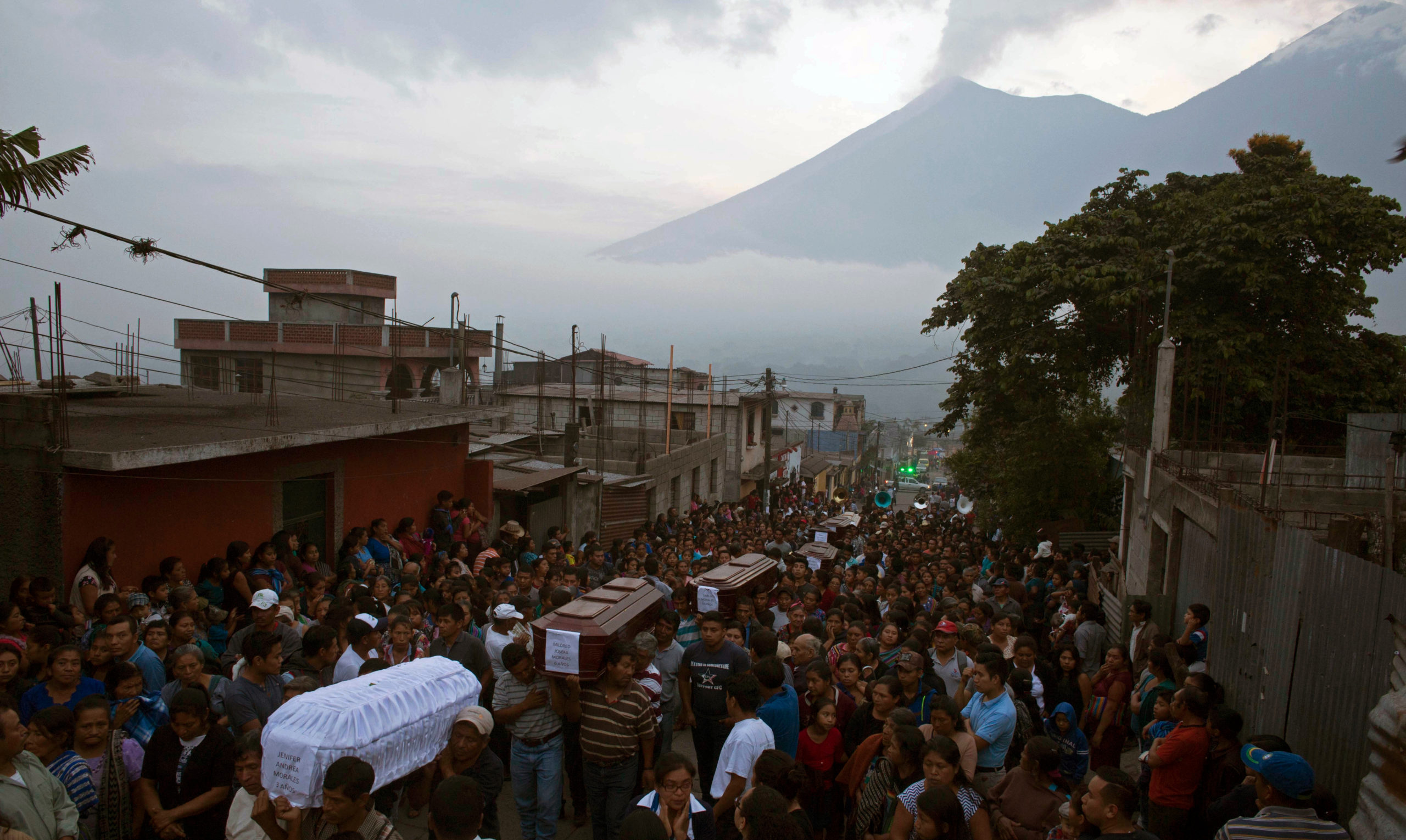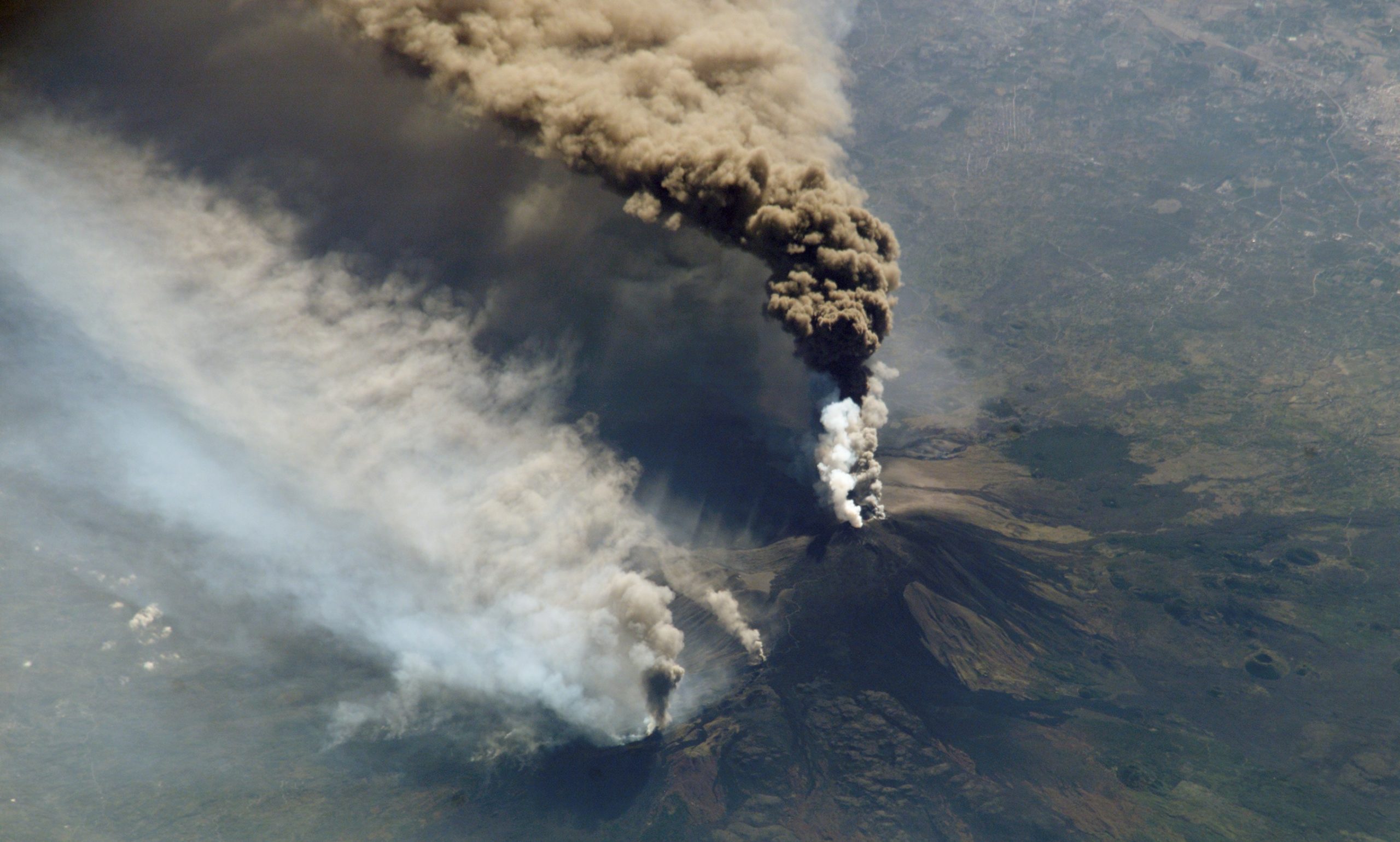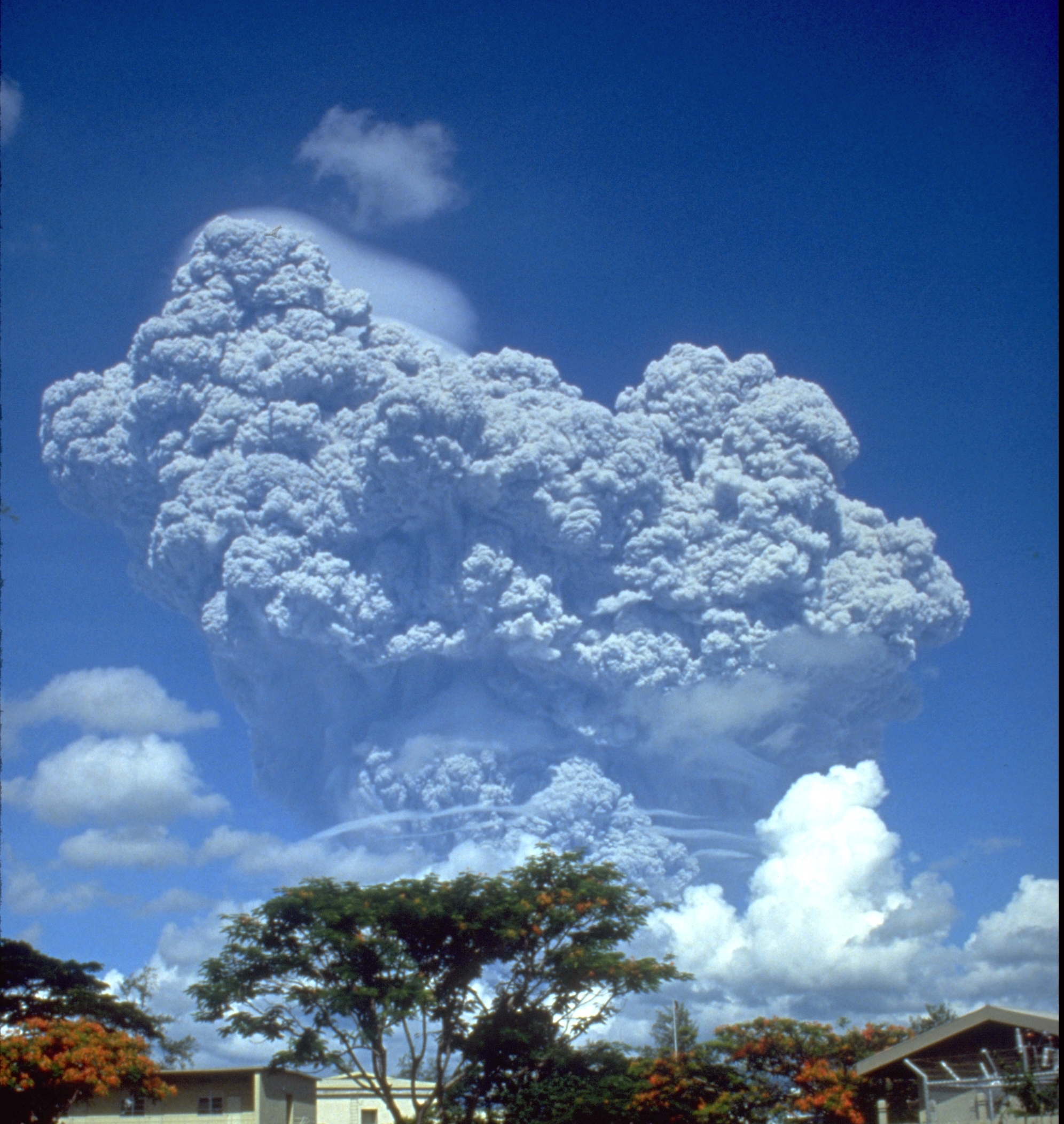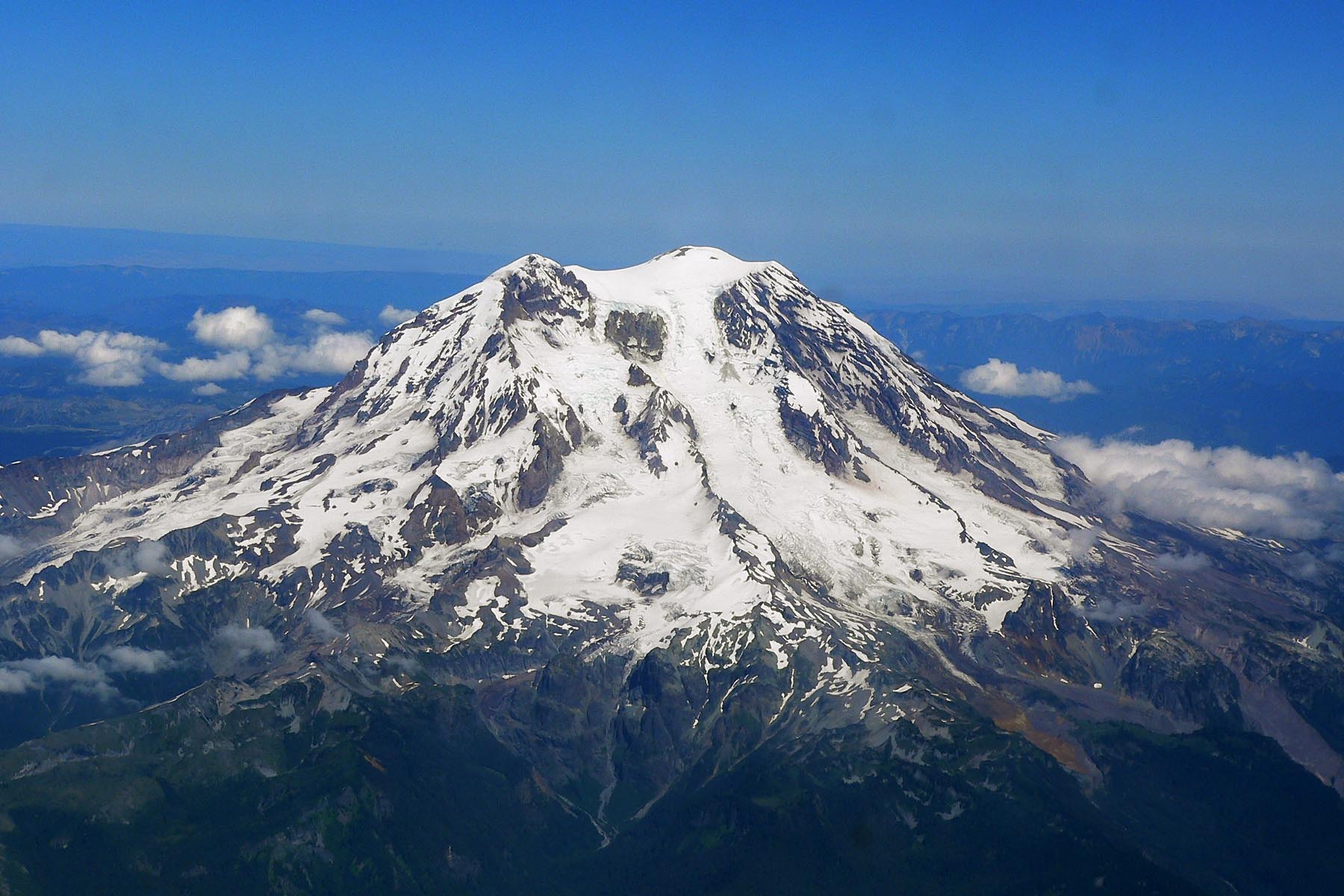The recent volcanic eruptions in Hawaii and Guatemala are potent reminders that our planet is capable of unleashing its pent up fury at virtually any given time. Predicting eruptions isn’t easy, but some volcanoes are more worrisome than others.
Before we list our planet’s most “overdue” volcanoes, it’s important to establish some perspective. Like earthquakes, volcanic eruptions are almost impossible to predict. Scientists aren’t at the stage yet where they can reliably tell when an eruption is imminent, but they’re steadily getting there. What’s more, the suggestion that some volcanoes are more “overdue” than others is a notion that resides in the eye of the beholder.

The coffins of several people who were killed during the eruption of Mount Fuego this past Sunday in Guatemala. Photo: AP
“Overdue in human terms is very different than overdue in geologic terms,” Ben Edwards, a professor of earth sciences at Dickinson College, told Gizmodo.
“For example, given the observation that Yellowstone has a big eruption about every 600,000 to 700,000 years, it is probable that it will have another large eruption in the next 100,000. That’s seems like a lot of time to humans, but from the perspective of a planet that is 4.5 billion years old, a hundred thousand years in the future is relatively soon.”
An eruption at the Yellowstone Caldera would be particularly bad, with experts predicting a resulting lava flow extending outward for 50 to 65km. An eruption of the Yellowstone super-volcano may not happen for thousands of years, but research shows we’d only have about a year’s warning to prepare such a cataclysmic event.

Eruptions on Mt Etna as seen from the International Space Station in 2002. Photo: NASA
Tracy K.P. Gregg, a geologist at the University at Buffalo, said it’s almost impossible to know which volcanoes are more likely to explode than others, but we’re not completely helpless in this regard.
“We learn about a volcano’s likely future behaviour by examining its past behaviour: We look at how often it has erupted in the past, and how big those eruptions were,” Gregg told Gizmodo. “The simplest thing to do is to assume that the volcano will continue to behave in the same way it always has.”
That said, we know precious little about most of the world’s active volcanoes. There are about 550 active volcanoes on land, which doesn’t include the many volcanoes on the ocean floor. Gregg said only those volcanoes located near populated areas of first-world countries, such as the United States, Japan and Italy, are monitored on a regular basis.
“Remember how Pinatubo erupted in the Philippines in 1991? Until that volcano began showing signs of unrest – typically small earthquakes that are caused by magma moving beneath the volcano – no one had conducted a detailed geologic investigation of the volcano’s past, so we didn’t know what the volcano had done before,” she said. “There simply isn’t the time, people and money to monitor and study every active volcano.”

Eruption of Mt Pinatubo, 12 June 1991. Photo: USGS
Frighteningly, Gregg said it’s entirely possible, even likely, that the volcanoes we should be watching out for are the ones we know little about, such as Mount Tambora in Indonesia and Iwo Jima off the southern coast of Japan.
In terms of knowing which volcanoes are currently more apt to explode than others, Edwards said we should be watching all volcanoes that have experienced eruptions within the past 10,000 years. Ideally, he said, we should gradually remove people from these known hazard zones and increase the monitoring of those volcanoes. Unfortunately, de-populating potentially dangerous areas is easier said than done.
As noted, it’s difficult to say which volcanoes are the most overdue, but the International Association of Volcanology and Chemistry of the Earth’s Interior (IAVCEI) Decade Volcano Program has identified the volcanoes most in need of watching and monitoring.
Volcanoes on this naughty list aren’t necessarily the ones voted most likely to blow; instead, they’re potentially volatile volcanoes within populated regions that are capable of producing lava flows, ash falls, pyroclastic flows (fast-moving plumes of rock, ash and volcanic gases), and lahars (similar to pyroclastic flows, but containing mud and other volcanic debris), and other volcanic blights.
The top 16 IAVCEI Decade volcanoes are as follows:
- Avachinsky-Koryaksky in Kamchatka, Russia
- Colima in Jalisco, Mexico
- Galeras in Nariño, Colombia
- Mauna Loa in Hawaii, United States
- Mount Etna in Sicily, Italy
- Mount Merapi in Central Java, Indonesia
- Mount Nyiragongo in North Kivu, Democratic Republic of the Congo
- Mount Rainier, in Washington, United States
- Mount Vesuvius in Campania, Italy
- Mount Unzen in Nagasaki/Kumamoto, Japan
- Sakurajima, in Kagoshima, Japan
- Santa María in Quetzaltenango, Guatemala
- Santorini in the South Aegean, Greece
- Taal Volcano in Calabarzon, Philippines
- Teide in Canary Islands, Spain
- Ulawun in East New Britain/West New Britain, Papua New Guinea
Conspicuous by its absence is Mount Fuego, which erupted in Guatemala on July 3, killing over 110 people and with scores still missing. The IAVCEI list is a best guess, and the sad reality is that scientists don’t know which volcanoes are more prone to explode than others.
Mount St Helens, for example, is not on this list despite its huge, deadly eruption in 1980. Scientists say St Helens is currently in “recharging” mode, and that it’s in no danger of exploding any time soon, but as Fuego demonstrated, we can’t be completely sure.
As for Mount Kilauea in Hawaii, it isn’t on the IAVCEI list because it isn’t considered a major threat to human life; Kilauea’s oozing lava and toxic gases are certainly inconvenient, but it isn’t terribly dangerous compared to volcanoes that can expel huge volumes of ash and generate dangerous pyroclastic flows.
In addition to the Yellowstone Caldera, Gregg is concerned about Washington state’s Mount Rainier (listed above). “It seems to have experienced potentially damaging eruptions every couple of thousands of years and its last hazardous eruption was about 2200 years ago,” she said. “However, even a small eruption of Rainier could cause significant damage to property.”
No doubt, Mount Rainier considered one of the most dangerous volcanoes in the world, and with its copious amounts of glacial ice, is considered a significant threat to the entire Puyallup River valley and the 3.7 million residents of the Seattle area.

Washington’s Mount Rainier. Photo: Stan Shebs/Wikimedia
The volcanoes at the top of Edwards’ personal watch list include Katla and Hekla in Iceland, Villarrica and Llaima in Chile, Klyuchevskoy in Russia, Veniaminof in Alaska, and Etna in Sicily.
“These are all snow/ice-covered volcanoes that have a reasonable probability of erupting in the next 10 to 50 years,” said Edwards. “You can bet that if any do erupt, I will do my best to head their way to study volcano-ice interactions!”
Eruptions on mountains with snow and ice are particularly scary because the resulting meltwater can produce far-reaching lahars – roiling slurries of debris reminiscent of wet concrete.
But as Gregg explained earlier, some of the most troublesome volcanoes may be the ones we know the least about, or the ones we least suspect. Here’s hoping that science will eventually show us a way toward more reliable prediction of volcanic eruptions.
